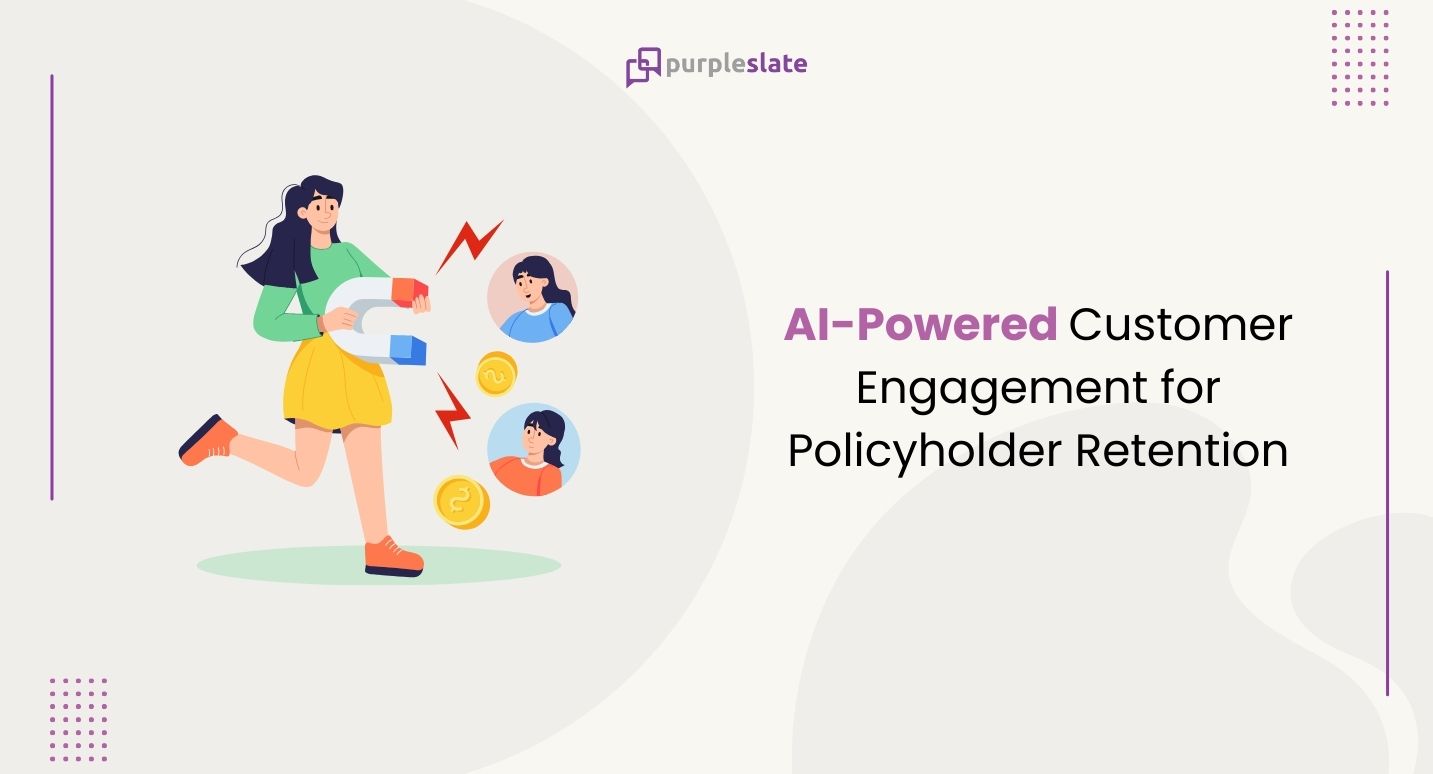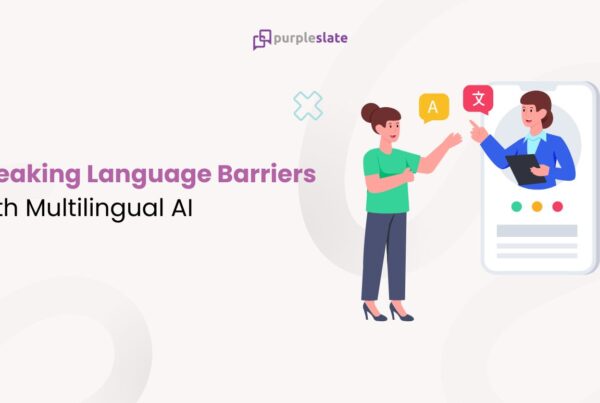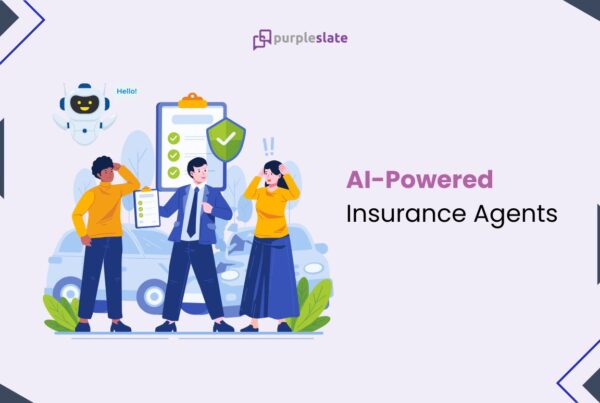
Introduction
Retaining policyholders has become one of the most pressing challenges in the insurance industry today. With an increasingly competitive market, where customers can easily switch providers, maintaining loyalty is more difficult than ever. Add to that the rising expectations of modern consumers—who now demand personalized, seamless digital experiences—and the task becomes even more complex. For insurers, this isn’t just a matter of convenience; it’s about survival. Studies show that acquiring a new customer can cost five times more than retaining an existing one, and the longer policyholders stay, the more profitable they become over time.
Despite the significance of retention, many insurers struggle to provide the proactive, personalized engagement that policyholders expect. Traditional methods of customer engagement, such as generic emails and outbound calls, often feel impersonal, resulting in disengaged customers who are more likely to churn.
This is where AI-driven customer engagement comes into play. By leveraging artificial intelligence, insurers can create highly personalized, real-time interactions that not only meet but exceed customer expectations. AI can transform how insurers engage with their policyholders, providing a frictionless experience that drives long-term loyalty and retention. The following sections will explore how AI can serve as the key to unlocking greater retention rates in the insurance industry.
The Role of AI in Customer Engagement
Artificial Intelligence (AI) has revolutionized how businesses interact with customers across industries, and insurance is no exception. Traditionally, customer engagement in the insurance sector has been reactive, focusing on addressing issues after they arise. However, with AI, insurers can shift to proactive and predictive engagement, ensuring that policyholders receive the right information at the right time.
AI-powered systems can analyze vast amounts of data from multiple sources, including customer interactions, social media behavior, claims history, and even external data like economic trends. This data allows insurers to develop a deeper understanding of their customers’ needs, preferences, and potential pain points. By identifying patterns and trends, AI helps insurers engage with policyholders more effectively, ensuring that their communications are timely, relevant, and personalized.
Moreover, AI can automate routine tasks, such as sending reminders about policy renewals or recommending tailored coverage options based on changes in a customer’s life circumstances. This not only enhances the customer experience but also ensures that policyholders feel valued and understood. With AI, engagement becomes more than just communication—it becomes a continuous dialogue between insurers and policyholders, driven by insights that keep customers connected to the brand.
Personalization: A Key Driver of Retention
Personalization is no longer a luxury; it’s an expectation. Policyholders today want to feel like their insurance provider understands their unique needs, and AI makes this level of customization possible. Through advanced algorithms and machine learning, AI can process and analyze individual customer data in real-time, delivering hyper-personalized content and recommendations.
For instance, AI can identify life events that might require changes in coverage, such as marriage, the birth of a child, or purchasing a home. Rather than sending generic messages, insurers can use AI to tailor their communications, offering relevant product recommendations based on the policyholder’s specific circumstances. This personalized approach not only builds trust but also strengthens the relationship between the insurer and the customer.
Moreover, AI allows insurers to move beyond reactive services, such as simply responding to claims or inquiries. Instead, AI-driven platforms can anticipate customer needs and engage them proactively, whether it’s recommending policy adjustments, alerting them to new offerings, or simply checking in on their satisfaction levels. This consistent, personalized engagement keeps policyholders invested in their coverage and reduces the likelihood of them seeking alternative providers.
Real-Time Support for Frictionless Experiences
One of the biggest advantages of AI-driven customer engagement is the ability to offer real-time, 24/7 support. For many policyholders, navigating insurance processes can be daunting, whether it’s understanding their policy details, filing a claim, or making adjustments to their coverage. Conversational AI in the form of chatbots or virtual assistants can step in to provide immediate assistance, answering questions, clarifying terms, and guiding users through complex processes in a way that’s easy to understand.
AI-powered chatbots, unlike traditional customer service agents, can handle multiple interactions simultaneously, providing prompt responses at any hour of the day. This ensures that policyholders never have to wait for assistance, making their interactions with the insurer smoother and more efficient. Whether a customer is looking for policy information or needs help filing a claim, AI ensures they get the help they need, instantly.
Additionally, AI can integrate with backend systems to streamline more complex tasks. For instance, if a policyholder is submitting a claim, the AI system can retrieve necessary data, validate information, and process the request without requiring manual intervention. This reduces friction and enhances the overall customer experience, ensuring that policyholders remain satisfied and engaged throughout their journey.
Automating Engagement Without Losing the Human Touch
While AI can handle a wide range of engagement tasks, there is still a critical need for human involvement in certain interactions, especially those that require empathy, complex decision-making, or personal touch. The key to enhancing policyholder retention lies in finding the right balance between AI-driven automation and human interaction.
AI can manage repetitive tasks like processing claims, answering frequently asked questions, or sending reminders. However, for more intricate or emotionally charged situations—such as when a policyholder is filing a claim after a significant loss—a human agent’s empathy and understanding are irreplaceable. The power of AI is that it allows human agents to focus on these high-value tasks by handling the routine work. This division of labor ensures that policyholders get the personalized support they need when it matters most.
By automating the more mundane aspects of customer engagement while preserving the human element for complex interactions, insurers can provide a seamless experience that feels personal, empathetic, and efficient.
Measuring the Success of AI-Driven Engagement
Implementing AI-driven customer engagement strategies is just the first step. To ensure they are driving the desired results, insurers must measure the impact of these initiatives using key performance indicators (KPIs). Metrics such as customer retention rates, satisfaction scores, and response times are vital to understanding how well AI is enhancing the policyholder experience.
Tracking engagement levels can help insurers identify which strategies are working and where there is room for improvement. For example, high chatbot usage rates and short resolution times might indicate that AI is effectively managing policyholder inquiries. Conversely, increased churn rates or low customer satisfaction could suggest a need for further refinement in AI-driven interactions.
By consistently analyzing these KPIs, insurers can ensure that their AI-driven engagement strategies are delivering value, both in terms of customer retention and overall business performance. Continuous improvement is key to maintaining a competitive edge in the ever-evolving insurance landscape.
Conclusion: The Future of Policyholder Retention with AI
As customer expectations continue to rise, AI-driven customer engagement will become an essential tool for insurers looking to retain policyholders and build long-lasting relationships. Through personalized, proactive, and real-time interactions, AI enables insurers to deliver the seamless, intuitive experiences that today’s policyholders demand.
By leveraging AI for customer engagement, insurers can go beyond traditional retention strategies and embrace a future where customer satisfaction and loyalty are driven by intelligent, automated interactions. Those who invest in AI now will be better positioned to meet the evolving needs of their policyholders, ensuring higher retention rates and a competitive advantage in the insurance market.




